If you are to ask Dan Brown what he thinks about Manila, his novel “Inferno” has an excerpt that would easily give away his answer. The best-selling author depicted the Philippine capital as “the gates of hell,” mentioning the city’s worst attributes: six-hour traffic jams, suffocating pollution, horrifying sex trade.
I visited Manila several times in the past coming from the central part of the archipelagic country, and I have witnessed and experienced all three.
As much as it hurts my ego as a Filipino, it is what is on the ground.
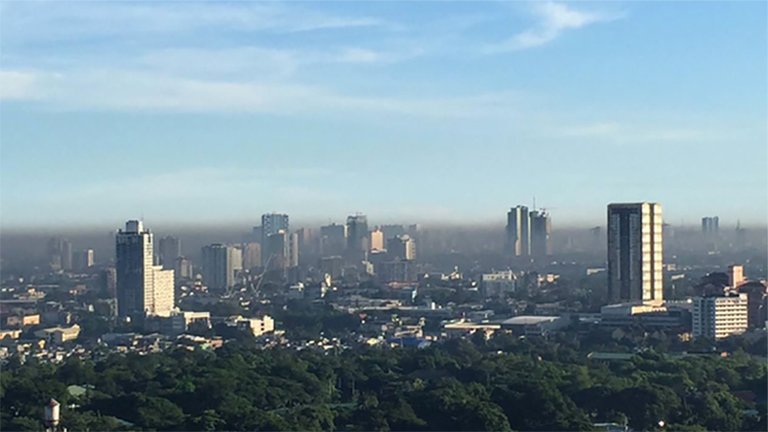
Photo by CNN Philippines
Recently, I decided to fly to Manila from a small city in the Visayas to build on a career that I want, meaning a long-term stay. This is a typical probinsyano mentality: that Manila is the land of golden opportunities, a place where a Filipino’s dreams are made of.
Having been to Manila before, I have set expectations what it would be like if I stayed. My mindset is framed that daily living will not be the same as it was in my hometown in Roxas City, Capiz. Not to mention that I will be independent, so support from my family is digital at most.
After living here for more than two months now, I have landed a sales job in a top solar company. In my journey, I found Dan Brown’s harsh comment back then still valid – much of Manila is still plagued with traffic jams, pollution, and prostitution.
For one, the commutes are terrifying. Especially during rush hour, people would deem a spot in the bus, train, or jeepney a matter of life and death. Workers from all walks of life are always at a rush in the streets. Manila is indeed the gates of hell, and the evils manifest in all who want to make it home the earliest time possible.
This is the typical scene on a Friday afternoon before riding the MRT3 at EDSA Taft station:
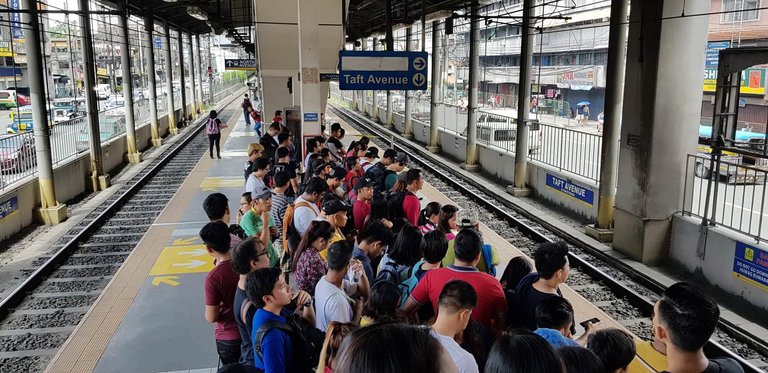
The situation is worse later in the evening with buses plying along the main highway EDSA looking like this:
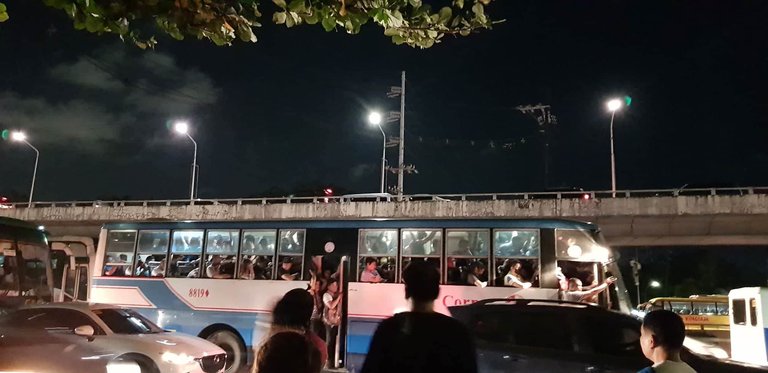
A public utility vehicle with almost no void.
And then there are still those who expect to get a ride in the already loaded buses.
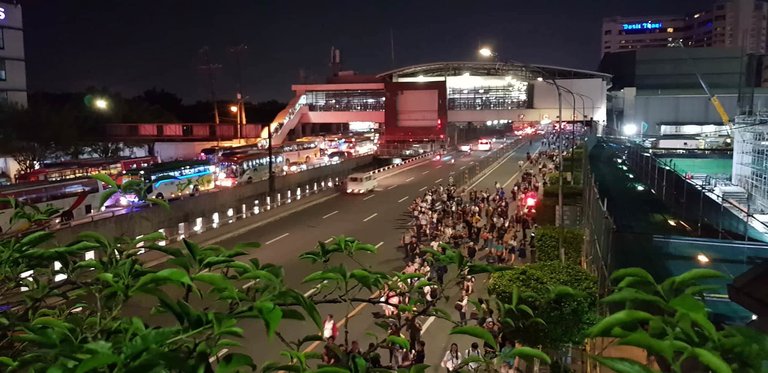
A failed transportation system is a perennial problem in Manila, affecting the lives of many Filipinos on a daily basis. I hate that I have wasted a lot of my time while in gridlocks. Metro Manila is one of the worst places in the Philippines if one wants to be productive. This is not the kind of commuting pace I am used to.
Going back and forth Manila and Cavite, a province about 20 kilometers away from the capital where I used to stay for training, I pondered upon the trash issues of my fellowmen.
It is still so difficult for many to keep their litter in their pockets or bags, not minding that the candy wrapper or plastic bottle can end up anywhere and cause floods. Even where there is a garbage bin a few meters away, throwing trash is still such a chore for them. The frustration is high for someone like me who keeps his trash at minimum and in their proper places.
Here is a spot found in the capital city Manila by the Eco Waste Coalition, a sight that does not come as a surprise for most Filipinos.
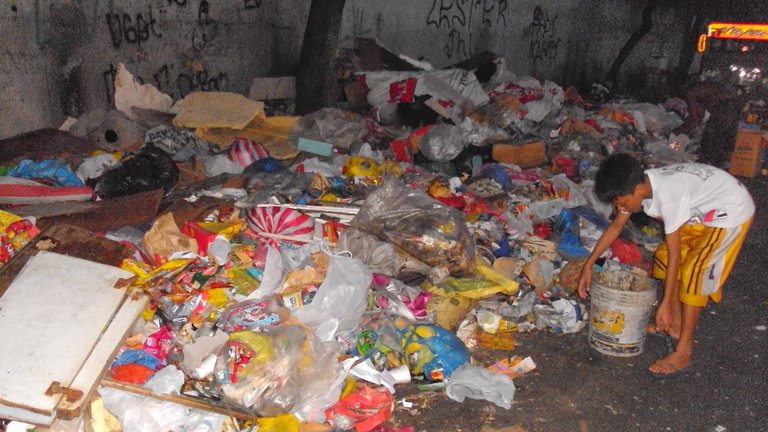
Moreover, the quality of air and water in Metro Manila is also not in the best shape. In many public areas, it is difficult to breathe due to the smoke belchers and corporations spewing pollutants in the air – suffocating is the best adjective, agreeing with Dan Brown.
Get Real Philippines captures that in this photo:

Look at that blurred skyline, covering Manila in toxic haze.
Rivers, bays, and other bodies of water that I passed by are often clogged and floated with different kinds of foreign objects, a consequence stated previously.
At night, Malate in the capital city Manila and some streets in Makati City, among others, turn into a hub of pick-up men and women, displaying their flesh. That’s because foreigners, who are willing to pay big cash for one-night stands or sex buddies, usually flock these areas. The situation has not changed a bit in the past years after visiting from time to time. Horrifying, indeed.
Jojo Regis put this photo in his blog which illustrates the massive prostitution around:
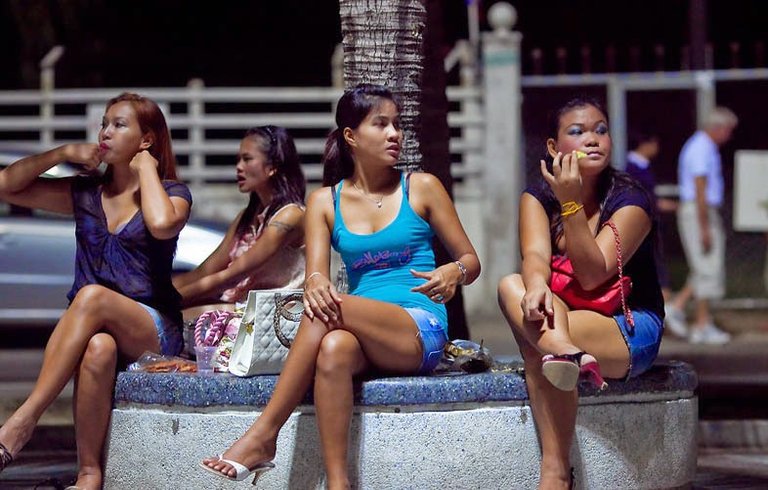
To feed a family, they resort to this kind of trade.
I could not blame Dan Brown if he thinks about Manila that way. Maybe in his last trip to the Philippines, or what he read and heard, the worst parts stuck to him – an identity that we will keep to eternity until we change our attitude, do something about our discipline, and remove a deep-seated culture of inappropriate services. It takes introspection to be able to correct this, and it starts by accepting the harsh truth.
To answer my question in the title above, as if it isn’t obvious yet, Manila, Philippines as described in Dan Brown’s Inferno is a matter of fact. Definitely.
Hi @dioncrediblehulk
Featured!
Thank you for crafting an amazing blog that exhibit Philippines' unique Culture and Tradition.
With that, we're greatful we have chosen this blog to be featured and upvoted by @onerace to empower impactful Philippines' Culture and Tradition blogs.
Feel free to click the post :
https://steemit.com/onerace/@onerace/onerace-update-july-06-july-07-2018-empowering-filipino-culture-and-tradition
Unfortunately, living in any one of the most densly populated cities in the world is no different. Pollution and trash, crime, prostitution... it all comes with long-term unregulated growth. Will it ever change... not in my lifetime, and possibly not in yours. I choose to stay in the province, which has it's own inherent set of problems, with less people.
Congratulations @dioncrediblehulk! You received a personal award!
Click here to view your Board